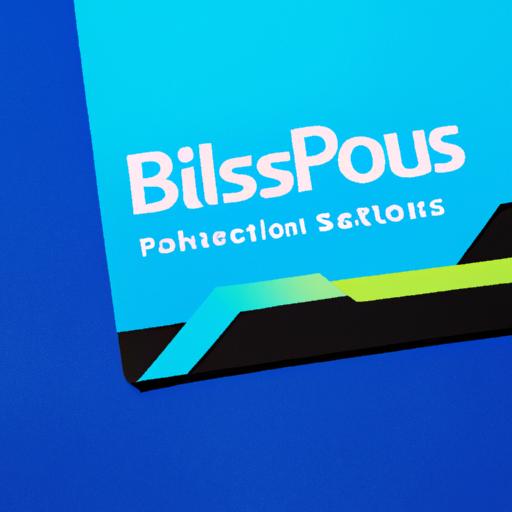Invoicing for Small Business: Boosting Your Financial Success

When it comes to running a small business, invoicing may not be the most glamorous task on your to-do list. However, it plays a crucial role in maintaining a healthy cash flow and ensuring timely payments from your clients. In this article, I will introduce you to the world of invoicing for small businesses, highlighting its importance and the benefits of adopting effective invoicing practices.
A. Importance of Invoicing for Small Business
Imagine running a small business without a proper invoicing system. Chaos would ensue, making it nearly impossible to keep track of your earnings, expenses, and outstanding payments. Invoicing acts as the backbone of your financial operations, providing structure and clarity to your business transactions.
By issuing professional invoices, you establish credibility and professionalism with your clients. An accurately crafted invoice showcases your attention to detail and reflects your commitment to providing top-notch service. Moreover, it eliminates confusion by clearly outlining the products or services provided, their costs, and any applicable taxes or discounts.
B. Benefits of Effective Invoicing Practices
Effective invoicing practices yield numerous advantages for small businesses. Firstly, they ensure that you get paid promptly. By clearly stating payment terms and deadlines, you provide your clients with a transparent framework, reducing the likelihood of delayed or missed payments. This, in turn, helps maintain a healthy cash flow and allows you to meet your financial obligations without unnecessary stress.
Furthermore, a streamlined invoicing system saves you time and effort. By utilizing invoicing software or automation tools, you can easily generate and send invoices to your clients, reducing manual errors and improving efficiency. This frees up valuable resources that can be redirected towards growing your business and serving your customers better.
Invoicing for small businesses isn’t just about numbers and transactions; it’s about building trust and maintaining strong relationships with your clients. By adopting effective invoicing practices, you demonstrate professionalism, reliability, and respect for your clients’ time and resources. This fosters a positive image of your business, laying the foundation for long-term success.
In the next section, we will delve into the key components of an effective invoicing system, exploring how you can create professional invoices that leave a lasting impression. So, let’s dive in and unlock the secrets to mastering the art of invoicing for small businesses.
Key Components of an Effective Invoicing System
In order to ensure smooth financial transactions and foster trust with your clients, it is essential to have an effective invoicing system in place. Let’s explore the key components that make up such a system.
A. Creating Professional Invoices
When it comes to invoicing for small businesses, professionalism is key. Your invoices should not only convey the necessary information but also reflect your brand identity. Consider the following design and branding considerations:
-
Design and Branding Considerations: Design your invoices with a clean and professional layout that aligns with your brand’s aesthetic. Incorporate your logo and use consistent colors and fonts to maintain brand consistency. This helps reinforce your brand image and leaves a lasting impression on your clients.
-
Including Necessary Information: Ensure that your invoices include all the essential details. This includes your company’s contact information, client details, invoice number, invoice date, and any other relevant information specific to your business. Providing these details not only helps in record-keeping but also makes it easier for clients to identify and process your invoices.
B. Clear and Concise Invoice Content
Clarity and conciseness are crucial when it comes to invoice content. Your clients should be able to quickly and easily understand what they are being billed for. Consider the following points:
-
Itemizing Products/Services: Break down your invoice by itemizing the products or services provided. This ensures transparency and helps your clients understand the individual costs associated with each item. Clearly state the quantity, unit price, and a brief description of the products or services rendered.
-
Including Accurate Pricing and Quantities: Double-check your pricing and quantities to ensure accuracy. Mistakes in calculations can lead to confusion and potentially strain your client relationships. Take the time to review your invoices thoroughly before sending them out.
-
Adding Applicable Taxes and Discounts: If applicable, clearly indicate any taxes, such as sales tax or value-added tax (VAT), that are included in the invoice amount. Additionally, if you offer any discounts, such as early payment discounts, make sure to specify them clearly. This encourages prompt payments and helps your clients understand the total amount owed.
C. Setting Clear Payment Terms and Deadlines
To avoid payment delays and ensure a smooth invoicing process, it is crucial to establish clear payment terms and deadlines. Consider the following points:
-
Defining Due Dates, Late Payment Penalties, and Discounts for Early Payment: Clearly state the due date for payment on your invoices. Additionally, inform your clients about any late payment penalties or fees that may be incurred for overdue payments. Conversely, if you offer discounts for early payment, communicate them explicitly to encourage timely settlements.
-
Communicating Payment Methods and Options: Provide your clients with various payment methods and clearly outline the options available to them. This can include bank transfers, online payment platforms, or credit card payments. Make it easy for your clients to pay you by providing all the necessary information and instructions.
By implementing these key components into your invoicing system, you can ensure professionalism, clarity, and efficiency in your financial transactions. In the next section, we will explore how to streamline the invoicing process further by utilizing invoicing software and automating recurring invoices. So, let’s continue our journey towards mastering the art of invoicing for small businesses.
Streamlining the Invoicing Process
Invoicing can be time-consuming and tedious, especially for small businesses with limited resources. Fortunately, there are ways to streamline the invoicing process and make it more efficient. In this section, we will explore two key strategies: utilizing invoicing software and automating recurring invoices.
A. Utilizing Invoicing Software
Gone are the days of manually creating invoices from scratch. With the technological advancements in the business world, dedicated invoicing software has become a game-changer for small businesses. By leveraging these tools, you can simplify and expedite the invoicing process, saving you valuable time and effort.
1. Benefits of Using Dedicated Invoicing Tools
Invoicing software offers a multitude of benefits. Firstly, it provides professional templates that are customizable to suit your branding and design preferences. This ensures that your invoices have a consistent, polished look that aligns with your business image.
Moreover, these tools automate calculations, making it easier to include accurate pricing, taxes, and discounts. This reduces the risk of errors and eliminates the need for manual calculations, saving you from potential financial discrepancies.
Additionally, invoicing software allows you to store client information, making it easier to generate invoices for repeat customers. This eliminates the need to manually input client details for each invoice, further streamlining the process.
2. Popular Invoicing Software Options for Small Businesses
There is a wide array of invoicing software options available, catering to the diverse needs of small businesses. Some popular choices include:
- FreshBooks: Known for its user-friendly interface and comprehensive features, FreshBooks offers an intuitive invoicing solution that is suitable for freelancers and small businesses alike.
- QuickBooks: A widely recognized accounting software, QuickBooks provides robust invoicing capabilities, allowing you to manage your finances efficiently and effortlessly.
- Zoho Invoice: With its seamless integration with other Zoho apps, Zoho Invoice offers a holistic invoicing experience, enabling you to streamline your business operations.
B. Automating Recurring Invoices
For businesses that have regular clients or provide subscription-based services, automating recurring invoices can be a game-changer. By creating templates for recurring clients and scheduling automated invoicing, you can save time and ensure that invoices are sent promptly without manual intervention.
1. Creating Templates for Recurring Clients
When you have clients who require recurring services or products, setting up templates for their invoices can significantly simplify the process. Once the template is created, you only need to input the necessary details, such as the service or product provided, quantity, and any variations in pricing. This eliminates the need to recreate the invoice from scratch each time, ensuring consistency and efficiency.
2. Scheduling Automated Invoicing for Regular Services or Subscriptions
Automated invoicing takes the convenience one step further by allowing you to schedule the delivery of invoices at regular intervals. Whether it’s monthly, quarterly, or annually, you can set the system to generate and send invoices automatically. This ensures that your clients receive their invoices promptly, reducing delays and improving cash flow.
In the next section, we will explore strategies to ensure prompt payments and effectively manage late payments. So, let’s continue our journey towards mastering the art of invoicing for small businesses.
Ensuring Prompt Payments and Managing Late Payments
Invoicing for small businesses isn’t just about creating and sending invoices; it also involves ensuring that you receive timely payments from your clients. Late payments can disrupt your cash flow and hinder your business growth. In this section, we will explore strategies to ensure prompt payments and effectively manage late payments when they occur.
A. Establishing a Professional Payment Reminder System
To encourage timely payments, it’s crucial to establish a professional payment reminder system. This helps you maintain a proactive approach while maintaining positive relationships with your clients.
1. Sending Polite Payment Reminders
Sending friendly payment reminders is an effective way to nudge clients who may have overlooked or forgotten their outstanding invoices. Craft your payment reminders with a polite tone, emphasizing the importance of prompt payment without sounding pushy or confrontational. Personalize the reminders by mentioning the specific invoice details and due dates, making it easier for clients to identify and resolve any payment discrepancies.
2. Using Automated Reminders for Due and Overdue Invoices
Automating payment reminders can save you time and ensure consistency in your communication. Utilize invoicing software that offers automated reminder features, allowing you to schedule reminders for due and overdue invoices. This not only helps you stay organized but also helps clients stay on top of their payment obligations.
B. Dealing with Late Payments
Despite your best efforts, there may still be instances where clients fail to make timely payments. In such cases, it’s essential to have strategies in place to manage late payments effectively.
1. Implementing Late Payment Fees and Interest Charges
One way to discourage late payments is by implementing late payment fees and interest charges. Clearly outline these penalties in your payment terms and make sure they are fair and reasonable. This serves as an incentive for clients to prioritize timely payments and compensates you for any additional costs or inconveniences caused by late payments.
2. Communicating with Clients to Resolve Payment Issues
When dealing with late payments, it’s important to maintain open lines of communication with your clients. Reach out to them to understand the reason behind the delay and work towards finding a mutually beneficial solution. This proactive approach can help resolve payment issues, strengthen client relationships, and demonstrate your commitment to customer satisfaction.
By establishing a professional payment reminder system and effectively managing late payments, you can optimize your cash flow and maintain a healthy financial position for your small business. In the next section, we will explore best practices for invoicing that can further enhance your business operations. So, let’s dive in and discover the secrets to successful invoicing for small businesses.
Invoicing Best Practices for Small Business
To optimize your invoicing process and maximize your financial success, it’s essential to implement best practices that streamline operations and enhance customer satisfaction. In this section, we will explore three key areas where small businesses can focus their efforts: keeping accurate records and backups, offering various payment options, and regularly reviewing and improving invoicing processes.
A. Keeping Accurate Records and Backups
-
Organizing invoice records for easy retrieval: Maintaining well-organized records ensures that you can quickly access past invoices when needed. Create a system that categorizes invoices by client, date, or project, making it simple to locate and reference specific transactions. This organization not only saves time but also helps with financial reporting and tax preparation.
-
Backing up invoices and data to prevent loss: Technology malfunctions and data loss can be disastrous for your business. Protect yourself by regularly backing up your invoicing data. Cloud-based storage solutions provide a secure and convenient way to store your invoices, ensuring that even in the event of hardware failure or natural disasters, your financial records remain intact.
B. Offering Various Payment Options
-
Accepting online payments: Embrace the digital era by offering online payment options to your clients. Online payment gateways, such as PayPal or Stripe, provide a convenient and secure way for customers to settle their invoices. By accepting online payments, you reduce the barriers to payment and increase the likelihood of receiving prompt settlements.
-
Providing multiple payment methods: Different clients have their preferred payment methods. By offering various payment options like credit cards, bank transfers, and even checks, you accommodate the diverse needs of your customers. This flexibility enhances customer satisfaction and reduces the likelihood of payment delays due to limited payment choices.
C. Regularly Reviewing and Improving Invoicing Processes
-
Analyzing payment trends and identifying potential improvements: Take the time to analyze your payment trends. Are there any patterns of late payments? Identify areas of improvement and consider implementing changes such as adjusting payment terms, offering incentives for early payments, or addressing common issues that may cause payment delays.
-
Seeking feedback from clients to enhance invoicing experience: Your clients’ feedback is invaluable. Reach out to them and ask for their input on your invoicing process. Are there any pain points or areas that could be improved? By actively seeking feedback and implementing client suggestions, you demonstrate your commitment to providing a seamless invoicing experience and strengthen your client relationships.
By implementing these invoicing best practices, you ensure accuracy, flexibility, and continuous improvement in your invoicing process. In the next section, we will wrap up our exploration of invoicing for small businesses, summarizing the key takeaways and emphasizing the importance of optimizing your invoicing practices for sustainable success.
Conclusion: Streamline Your Invoicing Efforts for Small Business Success
Invoicing may seem like a mundane task, but its impact on your small business’s financial health cannot be overstated. By implementing effective invoicing practices, you can optimize your operations, ensure timely payments, and foster strong client relationships.
Throughout this article, we’ve explored the importance of invoicing for small businesses. We’ve seen how it establishes credibility, provides clarity in transactions, and sets the stage for prompt payments. Additionally, we’ve discovered the benefits of effective invoicing practices, such as saving time, improving efficiency, and enhancing your business’s professional image.
To achieve success in your invoicing efforts, it’s important to prioritize organization, accuracy, and communication. By utilizing invoicing software or automation tools, you can streamline your invoicing process, reduce errors, and save valuable time. Remember to create professional invoices that reflect your brand’s identity and clearly outline the products or services provided.
Furthermore, setting clear payment terms, sending polite reminders, and promptly addressing late payments can help maintain a healthy cash flow and strengthen client relationships. Regularly reviewing and improving your invoicing processes will ensure you stay on top of your financial operations and adapt to the changing needs of your business.
Invoicing for small businesses goes beyond numbers and transactions; it’s about building trust, portraying professionalism, and providing exceptional customer service. So, embrace the power of effective invoicing practices, and watch as your small business thrives financially.
Now that you’re equipped with the knowledge and insights to optimize your invoicing practices, it’s time to put them into action. Implement the strategies discussed in this article, and witness the positive impact they have on your small business’s financial success. Cheers to streamlined invoicing and a prosperous future!
Conclusion: So above is the Invoicing for Small Business: Boosting Your Financial Success article. Hopefully with this article you can help you in life, always follow and read our good articles on the website: business.musictoob.com




